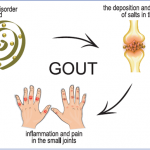Dr. Cronstein says that additional emphasis on translational research is needed to advance medicine and patient treatment in rheumatology as well as other medical specialties. “There’s been a dramatic decline in the number of new drugs that have been approved by the [Food and Drug Administration] over the past few years, although there have been quite a few discoveries at the bench. Science has not stopped, but there seems to have been a slowdown in the development of scientific discoveries into new therapies that can be used for patients,” he says.
Despite the existence of translational research programs, there are a number of reasons for the slow pace of drug development, notes Dr. Cronstein. One is that, after discovery of a molecular target in a disease, you have to find funding to investigate the clinical situations in which a new agent might work or a new target plays a role. But the catch-22 is that pharmaceutical companies or venture capitalists are usually only willing to invest in research on conditions there are already existing therapies and there is strong likelihood that the target is involved. Often, that knowledge is not there and progress can lag. “It’s called the Valley of Death for new ideas,” Dr. Cronstein says.
The idea behind the formation of Dr. Collins’ new NCATS is to improve the process whereby basic scientific research is translated into patient therapies through such steps as collaborations with industry and academia, strong support for the CTSA program, as well as the use of high-throughput screening for new therapies. “The biggest program within NCATS will be the CTSAs, but the question is: Do we need to change the structure of the program to improve the way we carry out this kind of research, and bring new therapies to patients? We’re now working with the NIH to come up with the optimal way to configure the CTSAs [within NCATS],” Dr. Cronstein says.
Barbara Boughton is a medical journalist based in California.

